THE ARAINS
There are different traditions about the background of Arain community. One thing that everyone agrees upon is that they are Arabs and came to India in 712 AD. (92 AH) with Mohammad ibn Qasim. History unanimously accepted and proved this theory after much research.
Background
Mohammad ibn Qasim’s attack on India
Al-Hajjaj ibn Yusuf was the most notable governor of the Umayyad Caliphate who ordered Mohammad ibn al-Qasim to attack India (Subcontinent). The Muslim empire was expanding rapidly in that era. Wherever Muslims went, they spread Islamic teachings and got millions of people converted to Islam because of the display of their righteous morality and Islamic preaching. They established Muslim colonies in the conquered areas. The Muslim army was comprised of not only the soldiers but also included the people from various walks of life. This was because the army had to stay in the conquered areas not for a few days, rather months or years. Thus, all the professionals and workers required to establish a colony used to come with the army, especially the religious scholars. Since soldiers only conquered the area, preaching and spreading Islam was the job of scholars and mystics.
First Research on the History of Arains
Mohammad Akbar Ali Sufi from Jalandhar was the first noble Arain scholar who in 1919 AD published research about the background of his community. In his book Saleem al-Tawarikh, he wrote authentic references about Arains and presented the al-Raee theory.
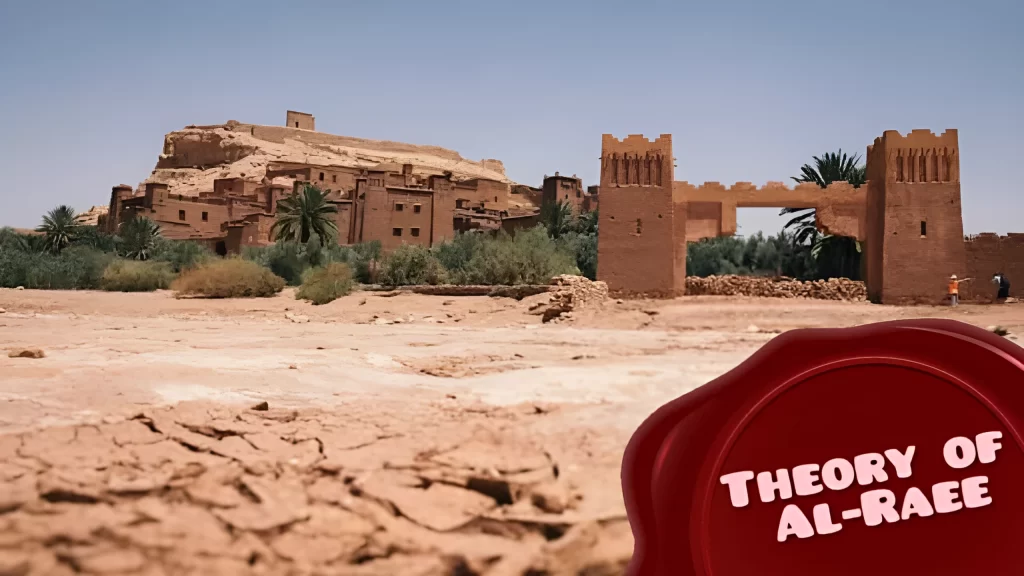
Al-Raee Theory
Mohammad Akbar Ali gave the first theory about Arains. He named it al-Raee theory. The theory had the following concepts.
The al-Raee theory published in Saleem al-Tawarikh is as follows:
- Arains are the Arabs who conquered Sindh along with Mohammad ibn al-Qasim. Shaikh Saleem al-Raee, an eminent Arain ancestor, like other Arabs was exhausted of the atrocities of Yazid. Thus, he migrated from Madina towards Syria (present day Iraq) and settled at the bank of river Euphrates. Here, he started the ancestral Arab profession of flock-keeping as a shepherd. This is why he was famously called ‘al-Raee’.”
The Arabic word ‘Raee’ means custodian as the following Hadith says:
اَلاَ کُلُکُمْ رَاعٍ وَّ کُلُّکُمْ مَسْؤُلٌ عَنْ رَعَّیٖتِہٖ
Meaning: Beware! You all are Raee (custodians) and (Allah) will ask you about your respective subject.
Flock keeping had been the profession of most of the Prophets and Saints. Our Holy Prophet also tended the herd during his stay at Halima al-Sa’diyah’s place. The shepherd being the custodian of his herd is referred to as ‘Raee’ in Arabic.
Habib Al-Raee Is The Ancestor Of Arains
- According to Akbar Ali’s research, Arains are the progeny of Saleem al-Raee’s son Shaikh Habib al-Raee. His title ‘Raee’ became the recognition of his descendants and tribe. This title with the passage of time, became Ra’een, Ara’een and then Arain. Shaikh Habib’s son Haleem al-Raee also came to India with Mohammad ibn al-Qasim for preaching Islam.
- Habib al-Raee had an exalted status of being a Tabi’un Saint. Tabi’un were contemporaries of the Companions of the Holy Prophet and gained beneficence from them. Salman the Persian was included in al-Suffa fraternity and al-Suffa certainly is the foundation of mysticism and Faqr. The Holy Prophet spiritually trained and educated Salman the Persian, and he is the spiritual guide in the Naqshbandi order after Abu Bakr and is also his successor.
Lineage of Arains connects to Holy Prophet

Mohammad Akbar Ali referred to the genealogical tree of Saleem al-Raee from Mohammad Khan of Kandahar’s writing, Tazkirah-tul-Ikhwan fi Dhikr Umda-tul-Bayan. According to this genealogical tree, the lineage of Saleem al-Raee traces back and connects to the Holy Prophet at the sixth generation.
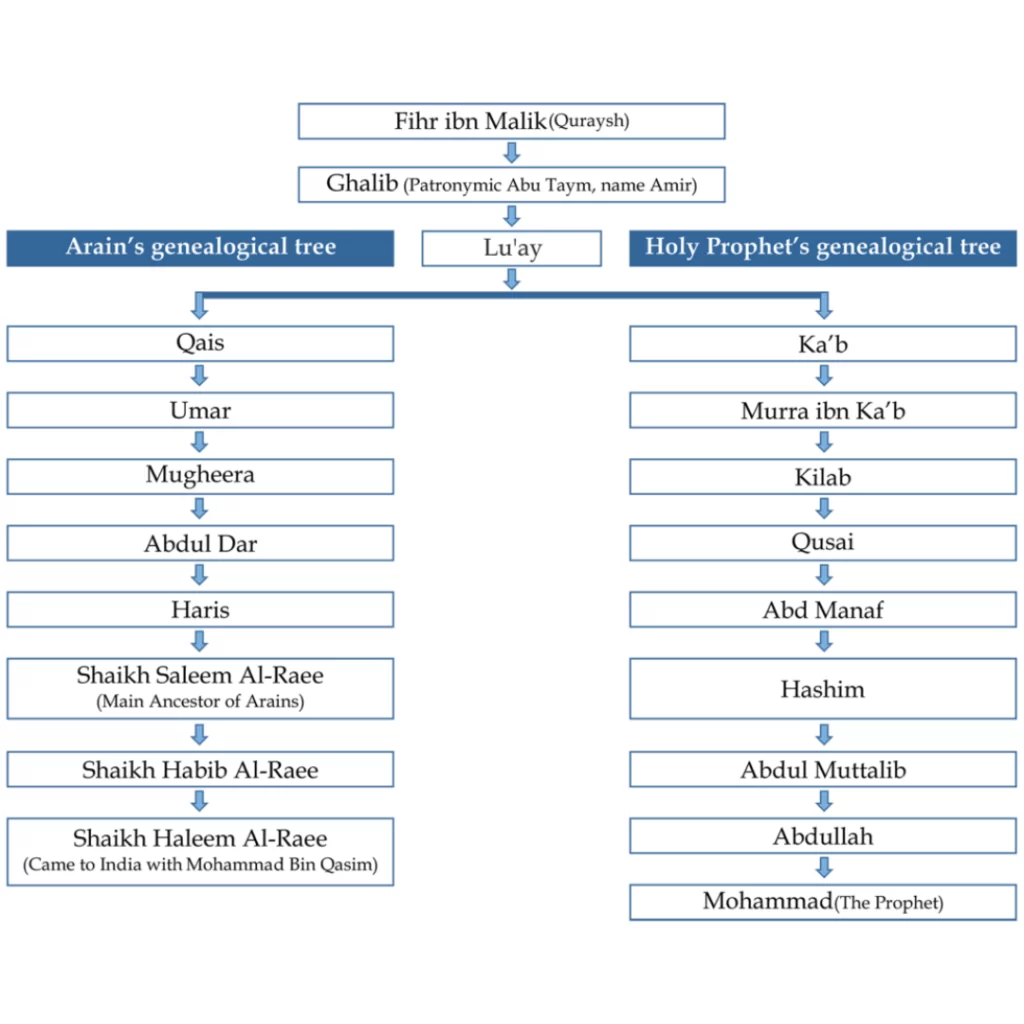
Fihr is the ancestor of Quraysh from whom the Quraysh tribe originated. People before Fihr are Kinanah. Afterwards, the Quraysh tribe divided into ten branches. These are Banu Hashim, Banu Umayyad, Nawfl, Abdul Dar, Bani Asad, Tameem, Bani Makhzoom, Adi, Jerham and Bani Sahm.
Habib al-Raee was a Prominent Saint
The ancestor of Arains, Shaikh Habib al-Raee was a great Saint. Shaykh Ali ibn Usman al-Hujwiri describes his exalted status in his famous mystic writing Kashf al-Mahjub. He said:
- Among the exalted Saints, Habib ibn Saleem al-Raee holds a prominent status and is a highly ranked Fakir and Mystic leader. There are numerous signs and evidence of his sainthood and was one of the companions of Salman the Persian. He related that Prophet Mohammad once said, نيّة المؤمن خير من عمله (Meaning: Intention of the Believer is better than his act).
Miracles of Habib al-Raee
Wolf Guarding the Sheep
Habib ibn Saleem al-Raee was a shepherd and lived at the bank of river Euphrates. He liked to remain in solitude. A very noble man related:
“Once I went to him, he was offering prayer, and a wolf was guarding his sheep. I thought to myself that I must meet this sage as I witness signs of Sainthood in him. I waited a little until he completed his prayer, then I offered salutation. He asked me the purpose of being there. I replied, ‘I have come to see you.’ Then he blessed me with his prayers. I enquired how come a wolf is guarding your sheep. He answered:
‘It is because of the companionship of the shepherd with Allah.’
He then put a wooden bowl under a rock. Two springs sprouted from this rock, one was of milk and the other one was of honey. He filled the bowl and offered me to drink it. I asked him, ‘O Shaykh! How did you get such a status.’ He replied, ‘The nation of Prophet Moses was against him, even then Allah granted them water from the rock by his grace. Whereas I am associated and allied to Prophet Mohammad then why Allah would not provide me with milk and honey. Even when the status of the Holy Prophet is the most superior of all.’
Advise of Habib al-Raee
The noble man then requested Habib al-Raee for a piece of advice. He advised:
لَا تجْعَل قَلْبُکَ۔ صَنْدُؤق اِلّحِرّْصِ وَبَطْنُکَ وِعَاءِ الْحَرَامْ
Meaning: You must not make your inward a compartment of lust and your stomach a place of illegitimate things.
Commenting on this advice Shaykh Ali al-Hujwiri said, “The creation is prone to destruction because of these two things and the redemption of creation also lies in salvation from these two. My perfect spiritual guide used to narrate several traditions of Habib al-Raee. I am short of time and cannot describe anymore because my books are in Ghazni. May Allah safeguard them” (Kashf–ul-Mahjub page 161, 162. Interpretation by Maulana Mian Ramzan Ali December 2007, Ilm-o-Irfan Publications Lahore)
Son of Habib al-Raee
The son of Habib al-Raee, Haleem al-Raee, also entered India through Sindh. He came along with his progeny and close relatives in the army of Mohammad ibn Qasim. He came for the sake of preaching religion. For four years, Mohammad ibn Qasim had been conquering different parts of India. The Arabs were also proceeding along him. When the Arabs settled here and the living circumstances were also conducive, their families came to India as well.
Hardships faced by al-Raee's
Salman Bin Abdul Malik became ruler after the death of Umayyad caliph Waleed Bin Abdul Malik and Governor Hajjaj. He was very much against Hajjaj and his generals. He was also punishing his generals severely. Hence, he called Mohammad ibn Qasim back from India. Then he got him killed after brutal torture. He ordered the Arabs who went to India with him to never return to Arab. Consequently, not only the conquering ceased in India but also the Arabs living there faced great hardships. Tareekh-e-Zakai is a book that describes the merciless behavior of Salman Bin Abdul Malik. It states, “It was as difficult for the Arabs to proceed ahead in India as was to return back.” The book, Tareekh-e-Tabri mentions that Salman Bin Abdul Malik ordered them, “There is no place for you in Arab. Go wherever you can, work as labourers or cultivators.”
Al-Raee's as Cultivators
After the death of Mohammad ibn Qasim, al-Raee’s had no choice but to continue living in India. Therefore, Shaikh Haleem al-Raee and his sons along with the preaching of Islam adopted cultivation. It was the most respected profession at the time. The following ancient saying confirms it.
اُتم کھِیتی ، مدھم بیوپار، نکھد چاکری بھیک دوار
Meaning: The best profession is cultivation; trade is lower than it and service is the lowest which is equal to begging.
The objections on Al-Raee theory
The analysis of objections upon Al-Raee theory and the suppositions of other researchers about Arains are as under;
First objection
The first objection was that Prophet Mohammad is Lu’ay’s ninth generation while Saleem Al-Raee in his sixth generation. Whereas the latter’s time is the after the Holy Prophet. How is it possible that the ninth generation comes before the sixth?
Argument against the first objection
The answer or argument against the first objection could be the following possibility;
Sometimes in a generation the children are born earlier, then they are married earlier at a young age as well. Consequently, their offspring are also born earlier and then their weddings also take place early and so on and so forth. Eventually, this generation will then grow rapidly and their generations will change more in less time.
Contrarily, the generation in which the marriages take place late and children are born late would grow slowly. Even today, we find several such examples in our surroundings. That is why this objection is irrelevant.
Ubaydah ibn al-Harith Bin Muttalib and his brothers Tufayl and al-Husayn from Quraysh tribe are a great precedent. They were from the seventh generation, also among the first and foremost ones to embrace Islam. While Nawfal Bin Haris, son of Abdul Muttalib’s eldest son Harith Bin Abdul Muttalib, was from the ninth generation. Even then, he was two years older than his uncles Abbas and Hamza. That is to say, the ninth generation was two years older than the eighth.
Similarly, Sultan Mohammad Najib-ur-Rehman’s father Abdul Hameed was the eldest brother but his children are the youngest of all.
The second research on Arains
Ali Asghar Chaudhry did the second research on the background of Arains. In 1963 he published his research in the form of book, titled Tareekh-e-Arain (History of Arains).
Second objection
Ali Asghar’s second objection was that he could not find any chief named Haleem Al-Raee in Mohammad ibn Qasim’s army. He claimed it after his thorough research. In this regard, he gave the reference of a book on Sindh’s history, Chach Nama. He also referred another book on history of India Aina Haqeeqat Numa.
Argument against the second objection
- The first answer to this objection is that Chach Nama is not a complete history. In that book, the Author wrote whatever facts he found at the time. He did not write the remaining despite being present, only because they were unavailable at that time. History is always incomplete if written by a single person. The same is the case with the other book Aina Haqeeqat Numa.
- The second answer is that there were a minimum of twelve thousand individuals in the army of Mohammad ibn Qasim. No historical book can have the names of all of them. Though, it may have the names of high-grade commanders and generals. Haleem al-Raee, however, came to India with Mohammad ibn Qasim as a preacher not as a general or commander. The history written about the Muslim monarchs and their battles revolves only around the kings or generals. Normally they do not mention Saints or religious scholars. The Sub-continent is replete with the tombs of the Saints but very few authentic history books mention their names. They would have to study other books especially those written about these Saints and scholars of the Sub-continent.
Haleem Al-Raee
A perfect Saint per Ganj Bakhsh
Haleem al-Raee, just like his father Habib al-Raee, was a true and perfect Saint. Ali al-Hajveri verifies that in Kashf-ul-Mahjub. In the old era, similar to the present era, religious scholars were part of the army. They were employed for the religious training of soldiers and other duties in the army. Their main role was to preach Islam and also help and train the army spiritually.
Haleem al-Raee - A religious aid to army
Haleem al-Raee must have accompanied the army as a religious scholar. His job may have been religious preaching as well as spiritual instruction and assistance of the army. He would have performed his job while remaining unknown because the Saints were not interested in fame and publicity. That is why most history books do not talk about them. However, it is a fact that several Saints came to India with Mohammad ibn Qasim. This is evident from the fact that almost one million graves of martyrs and Saints are still present in Sindh. (Referred from Qari Sayyid Meeran Shah)
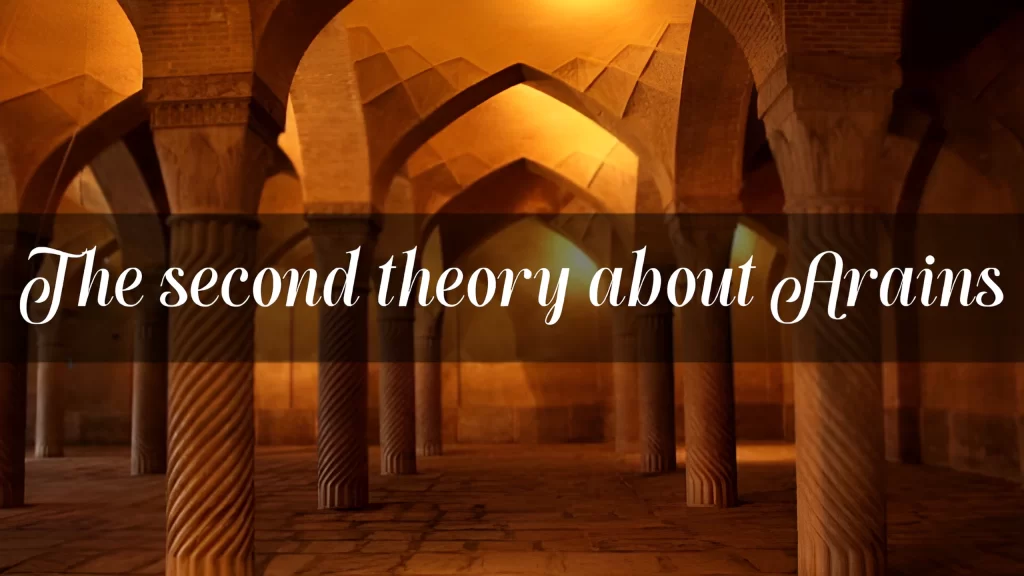
The Second Theory about Arains
Arains are from Ariha
Ali Asghar, the author of Tareekh-e-Arain, based on his research presented another theory about the background of Arains. He stated that Arains are the Arab warriors who came with Mohammad ibn Qasim from ‘Ariha’ which is a town in Northern Syria. He could not find Shaikh Haleem al-Raee’s name in the army of Mohmmad ibn Qasim, so he presented this theory. He writes in Tareekh-e-Arain:
Reference from ‘Jannat-ul-Sindh’
According to the book Jannat-ul-Sindh, “The Arabian army that attacked Sindh consisted of officers from Iraq, Syria, Yemen and Hijaz. (Hijaz is the old province of Arab which included the cities of Makkah, Madina, and Taif). Among them were several sages who had benefitted from the sacred Companion’s company. This is why they possessed the essence of Islam. They were nobles from different tribes. These included Quraysh, Umayyad, Banu Kilab, Banu Qais, Banu Asad, Banu Taym, Banu Saleem, Rabee, Sheban, Oman, Yemen, and Hijaz. These tribes had defeated the great empires of Ceasar and Kisra in the bloody battles of Yarmouk and Madain”. (Reference: Tareekh-e-Arain published 1977, Page 69).
Reference from ‘Aina Haqiqat Numa’
Akbar Shah Najeeb Abadi, the writer of Aina Haqiqat Numa also proclaims Arains as the descendants of chiefs of Ariha. He writes:
The comrades of Mohammad ibn Qasim consisted of people from Syria and Iraq. The Syrians were the most confident and loyal supporters of the Umayyad Caliphate. Most of them belonged to Banu Umayyad and Quraysh of Hijaz. They mostly settled in Ariha which is a city of Syria. The military sent by Hajjaj ibn Yousaf with Mohammad ibn Qasim had a good number of citizens of Ariha.
Objections on the Theory of Arihai
Generation after generation, the elders of the Arain caste have been transmitting the knowledge that supports the al-Raee theory. All the newspapers and journals about Arains also accept the al-Raee theory. Some examples of these journals and newspapers are:
- Weekly al-Raee,
- Raee Gazette,
- the Urdu newspaper al-Raee,
- Monthly al-Raee Lahore,
- Monthly al-Raee International London,
- Caravan-e-Arainyan by the Anjuman Arain Pakistan (Registered).
Caveat to the Theory of Ariha
The problem in accepting the theory of Ariha is that Ariha is the name of a military cantonment. The cantonment had deployed all Arab warriors. A quality of Arabs is that they never change their tribe. They can never forego the relation to their tribe, especially the Quraysh can never do so at all. How is it possible that these warriors adopted the title ‘Arihai’ only because of their residence in a cantonment? How can they break their original relation to their tribe? Neither any clan of Quraysh can do so, nor would it let its progeny to do so. Moreover, combining a crowd of people from different clans cannot make one community. Rather, a community belongs only to one tribe and one sage and comprises the generations of its progeny.
Arains Maintain their Individuality
Arains have always maintained their individuality. They neither merged into any other community nor let any other merge into them. They preserved their originality even after settling in India. Then how come, thirteen hundred years ago, it would have been constituted by the merger of various communities gathered at Ariha?
Drawback of the second theory
In addition to Arains, other Arab communities in the army of Mohammad ibn Qasim settled in Sindh as well. If we accept the second theory, then the question arises as to why these communities were not named Arain. Why did they maintain their exclusive identity? For example, Tameemi (Yemeni) Saqeefi, Bani Mugheera, Yatwar, Taee, Haris Sadia, Atliya, Ansari, Siddiqui, Farooqi, Abbasi, Qurayshi, Qazis of Sukkur, Sheikh, Makhdoom, Pir Syed, Akhwand, Alvi etc. Hence proved that the Arihai theory is contrary to reality.
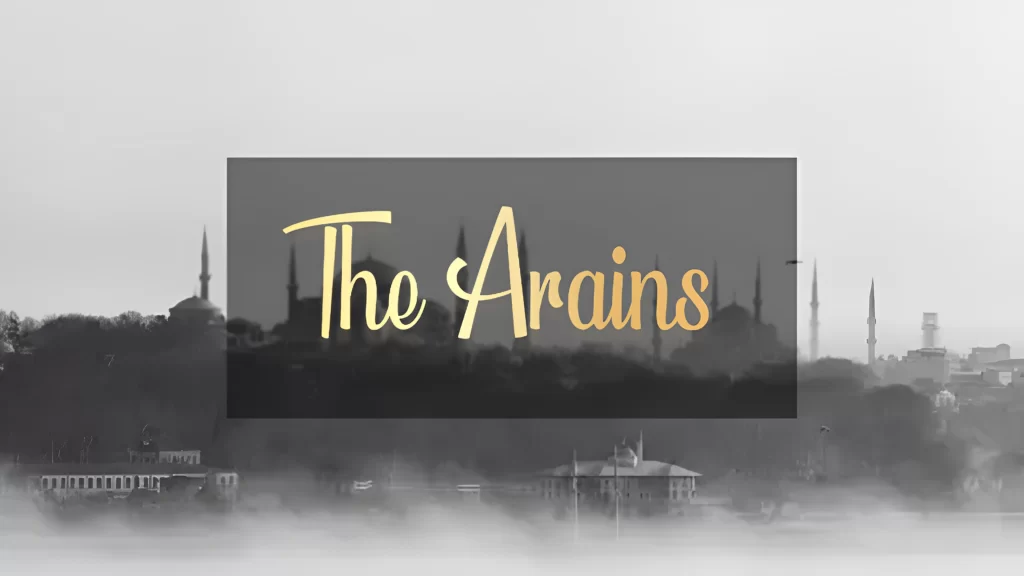
Third theory - Aal-e-Zorain
Munshi Ibrahim Mehsher Anbalvi presents his perspective about Arains in his book Aal-e-Zorain published in 1922. He wrote:
Arains are the Qehtanite Arabs. They are the progeny of Prem Zorain, who was born in 1352 B.C. Arains have been attacking India since the time of the man named Haris who was from the progeny of Zorain’s uncle. That means Arains first started coming to India almost two thousand years before the advent of Islam. Then, he came to India in the Islamic era along with the Muslim army. People called them Raen which changed to Ra’aeen and then Arain.
Conversion of Nauman Zorain to Islam
In 633 AD Nauman Zorain from the Ra’aeen community converted to a Muslim after reading the letter of the Holy Prophet. At that time, he was the ruler of a part of Yemen. Along with him, his brothers Naeem ibn Abd Kalal Zorain and Haris ibn Abd Kalal Zorain also accepted Islam. Nauman Zorain had written a letter to the Holy Prophet which was an affirmation of acceptance of Islam. The replying letter from Prophet Mohammad and the letter itself is historical and therefore preserved.
The genealogical tree of the progeny of Zorain is as under:
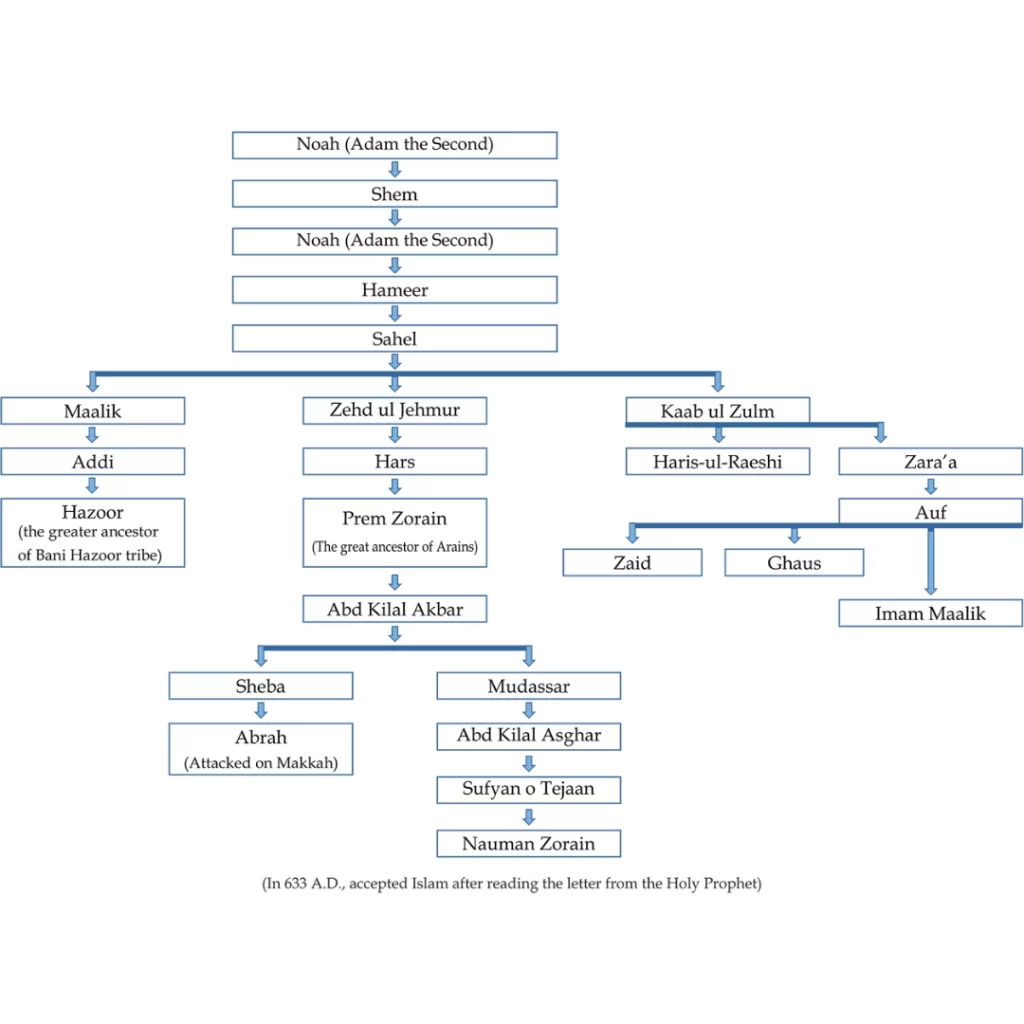
Drawback of Third Theory
The third theory does not hold strong grounds as well. The history does not prove the attack on India by the Arabs before Islam. Also, there is no proof of the inclusion of the progeny of Zorain in Mohammad ibn Qasim’s army. However, if this research is true then it also proves that Arains are Arabs.
Other theories About Arains
Some people presented merely their perceptions about the origin of Arains. However, these perceptions are not based on solid arguments, facts, witnesses, and research.
Theory stating Arains are from Arya Community
“Arains are from the Arya community.” This theory is presented merely due to the similarity in pronunciation of both words. The Germans relate the Arains with Aryans. Therefore, they warmly entertain the Arains whose passport states ARAIN. History is unable to provide any verification in favor of this concept. Aryans came from the German region Raen. All the historians agree to it but none of the authentic historians associated the Arain to Arya.
Concept stating Arains as Iranians
“Arains are Iranians.” This perception was presented only because of the similarity of the sound of the words. The tribes that migrated from Iran to India were very different. Their living style and culture are entirely distinct from the Arains and historically it is an unreasonable supposition.
Theory presented by Mohammad Hanif Meher Kacheilvi
In April 1962, Mohammad Hanif Meher Kacheilvi presented a theory in a periodical Khadim-e-Watan. He said that the Arains grow vegetables. Similarly, the Jews also wished to grow vegetables rejecting Mann-o-Salwa (the heavenly food presented to the Bani Israel from Allah). This somehow made him believe that the Arains were the descendants of Jews.
Argument on Mohammad Hanif Meher Kacheilvi’s Theory
The question arises, Are Arains the only community that grew vegetables in the Sub-Continent or for that matter in the entire world? This logical question is strong enough to reject Mohammad Hanif’s concept. For a moment let’s suppose it is true, then it is safe to say that Judaism is a high-breed religion. Also, the Jews are the children of Prophet Isaaq, the son of Prophet Abraham. Hence, they are the blood of Prophets.
Had it been the reality then it would have been a matter of pride for the Arains. They would have felt honored to be from the progeny of the ancient Prophets. In addition to that, there was a righteous group of Jews who believed in the last Prophet of Allah and embraced Islam. Examples are various distinguished Companions of Prophet Mohammad as well as the mother of the nation, Safia bint-e-Haee. They converted to Islam from Judaism. Had this theory been true, it would have been an honor for Arains. They would have accepted this theory readily, rather than being ashamed or dishonored about it.
Concept that Arains are Rajput
There is a concept that Arains are Rajput which is also wrong. If so, at least some Arains would have titled themselves as Rajput. Neither is there any historical proof of it nor has Arain ever referred to himself as a Rajput.

Concept stating Arains as Hindus
Major (Rt) Mohammad Sharif from London presented an entirely different and strange supposition about Arains. He has mentioned three branches of the Banu Sama tribe; (1) Abrah Sama (2) Shaikh Sama, and (3) Arayan Sama. He declared Arains as the descendants of Arayan Sama but failed to give any historical proof or proper justification. So, the historians rejected this hypothesis as well.
Conclusion
We have composed all known and unknown concepts about the Arains to make the reader aware of this community’s background. The whole discussion concludes on the point that the Arains are Arabs. However, it is an undeniable fact that the lineage of this community is confusing and controversial. However, if the al-Raee theory is true the Arains are the Quraysh Arabs. They came to India with Mohammad ibn Qasim and inhabited here.
